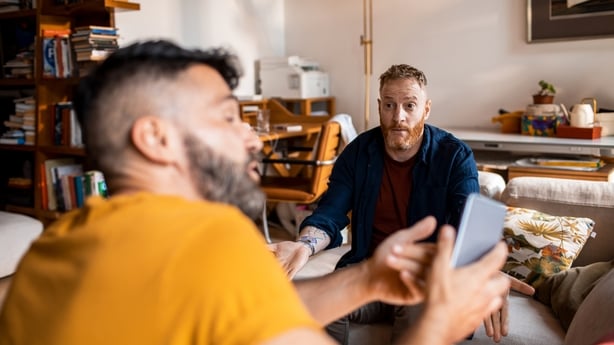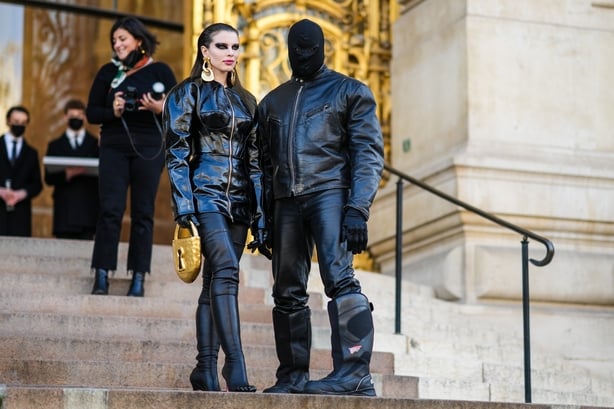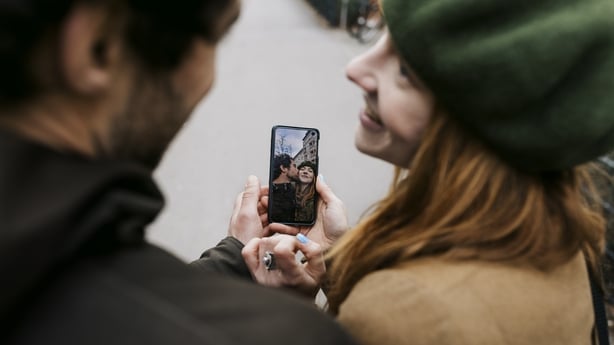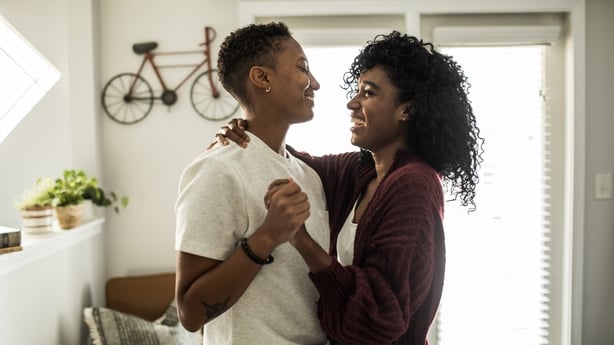When meeting online is the most popular way couples connect in the modern-day, should we be surprised when the 'very online' of us decide to live our courtship out via digital dyadic displays? Kate Demolder researches what it means when twosomes choose social media over reality, and how such relationships change all relationships, whether they want to or not.
Some six years after they first made headlines for their undeniable good looks, enviable lifestyle and seemingly perfect relationship, model Alexis Ren spoke out about how her two-year relationship with fellow model and world traveller Jay Alvarrez was anything but.
Speaking on the Call Her Daddy podcast, Ren, a Californian model who grew to fame at 15, told listeners how her relationship with Alvarrez – a perma-tanned Hawaii native-cum-crypto trader according to his bio – was not at all what it seemed, and that despite, at one time, being the world's most famous Insta-couple (couple on Instagram) at the time, the reality of a commodified relationship ground deeply against the couple’s differing belief systems.

'We were two kids with an unlimited amount of power, in a relationship that was amazing at first,' she told Call Her Daddy. 'When the business of our relationship became bigger than the connection itself, that's when it started to deteriorate,' she said. 'I just remember hearing from my friends, like, "He's staying with you for this one last job and then he's gonna leave.' But then another job would come along,' she recalled.
Back in 2018, a survey by charity Internet Matters, found that some 20% of 11 to 16-year-olds say they would be happy to have an online-only relationship. Showcasing your beloved online is now considered a pre-requisite of relationships in 2022.
It’s the latest step in the mercurial question of 'how do we love now?’ an act once wholly encompassed by medieval arrangements between warring families later pivoting to the dizzying profitability of romance-adjacent courtship.
In a separate survey, almost half of 18 to 29-year-old social media users say social media is 'very' or 'somewhat' important for them in showing how much they care about their partner. It’s an understandable phenomenon, given our reliance on social media to curate our social image in modern-day life.
To avoid showcasing your significant other might convey shame at best or infidelity at worst to an insecure partner. This is only exacerbated further by the accelerated commodification of the celebrity couple.
When actress Julia Fox and musician-cum-fashion designer Kanye (also known as Ye) West first stepped out together in January 2022, pop culture enthusiasts clutched their pearls. Kim Kardashian West, Ye’s former wife, had recently been seen out with SNL comic Pete Davidson, the first courtship to appear following the couple’s acrimonious divorce several months earlier.

The move was seen as a very modern rebuttal, and a fitting one too, given that 53% of us have used the internet to check up on a former flame. The outing was a scandal, and continues to be, as the pair step out fashionably and extravagantly in every elegant major city in the Western world, claiming front pages and paparazzi interest in one fell swoop.
In this instance, this writer thinks both parties are acting in the interest of exhibitional romance, a way for the celebrity IT couple to boost ratings and secure limelight in a world where the baton is passed at breakneck speed.
Much like the rolling social media trends we integrate and normalise ad nauseam into daily life (the promotion of work, sprucing up for pictures, sharing Wordle scores) the beliefs and mechanics of those who live their relationships for public consumption online rub off on those who never considered it, seeping in akin to osmosis.
Such trends have teed up the newly-dubbed Instagram soft launch – the art of carefully introducing your new relationship to your followers in a way that creates deliberate intrigue and shrinking reticence in equal measure. It’s seen in the addition of a hand outstretched across a dinner table in a story background or a second thick, coarse dressing gown in a post simply titled "spa day".
It’s this sort of example-led social interaction – the kind that never existed in any public form a decade ago – that now defines our relationships, coercing our insecurities and urges into a highly palatable format that, we tell ourselves, act as the complete opposite of what we’re portraying.

This sort of sharing also acts as a defence mechanism, protecting your relationship from outside threats rather than celebrating your connection in any authentic way. Any trainee psychologist will tell you that for anyone to commit to defence, they must first take offence, whether from internal structures or externally, suggesting that insecurity must then be rife.
New research by psychologists Kori Krueger and Amanda Forest echoes this, stating that certain types of displays may involve overcompensating for a less satisfying relationship, and people may also post about their relationships as a way to show off to others, thus claiming what’s theirs.
In their first study, they surveyed 236 Facebook users who were currently involved in a romantic relationship. They assessed how much they displayed their relationships on social media while also asking the extent to which they used social media as a way to protect their relationship.
The research showed that showing off your relationships on social media serves two purposes: 1) feeling more connected to your partner, as Kreuger and Forest discovered in a previous study, and 2) protecting your relationship from others who might be interested in pursuing either you or your partner.
Since information and photo-sharing sites have become an inseparable part of our daily routine (and oftentimes, identity-presentation) several studies investigated the impact of these platforms on our lives including romantic relationships. The overall picture is to say quite ambivalent.
It seems that, in this regard, social media gives rise to at least as much discord as it does pleasure, even in the most trusting and safe of relationships. One of the first empirical studies investigating this question found that social networking services can trigger our deep-rooted fear of abandonment because of their special features: for example, the ability to see, but not access, Facebook groups you’re not invited into.

Furthermore, our friends (and oftentimes hundreds of other followers) can follow up and comment on every featured element of our relationship, not to mention the previous relationships listed, which can be seen by our current partner too.
A study also found that because Snapchat allows its users to track with whom their acquaintances communicate the most, it elicits more jealousy than Facebook, which can easily generate tension between romantic partners. Instagram can also be, predictably, a minefield in this regard. If there is one activity on this platform that initiates negative relationship outcomes, it is the sharing, and subsequent liking, of sexy selfies.
For those who commit to the act of living out one relationship’s online, using apps like Facebook and Twitter as veritable photo albums and anniversary markers, don’t panic. Many couples surveyed felt that the act of aligning their feed with that of a significant other’s, as influencers do in a #collab, was altogether successful.
Whether that acted as a concentrated defence strategy akin to a lighthouse’s nautical signal, or as a quest to seek further common ground and thus connection, we’ll perhaps never know.
But given Instagram’s proclivity for pushing newfound social network norms on us like the shepherded flock we are, maybe consider leaving the thickly dense social strategy to Ye. Even if the irony of his single Love Lockdown does increase with age.


